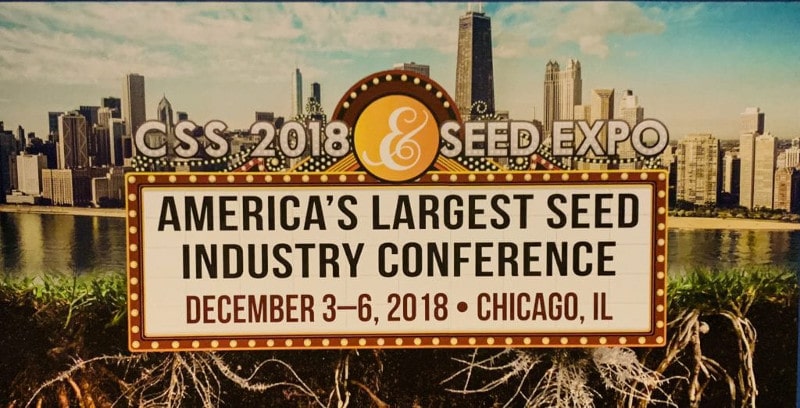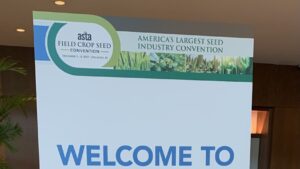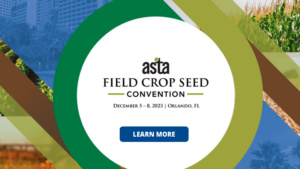On Tuesday, Dec. 4, the American Seed Trade Association kicked off CSS 2018 & Seed Expo in Chicago, Ill., with more than 2,300 individuals in and servicing the seed industry and representing more than 37 countries.
The show boasts the largest seed industry tradeshow floor in North America with more than 100 exhibiting companies and informational sessions on everything from an economic outlook to phytosanitary issues, and from digital tools to genetic diversity.
In addition to serving as a connection point for those in the industry to do business, learn and network, it’s also an opportunity to bring young professionals into the mix.
The benefits are two-fold, explains Andy LaVigne, ASTA president and CEO. Attendees get to meet and hear from up-and-coming talent, and young professionals get not only exposure, but also experience in sharing research and networking in a professional environment.
As part of the tradeshow, students had an opportunity to present posters highlighting their research. Participating students included:
- Kevin Falk, Iowa State University, who explores soybean diversity in root system architecture through genomic, phenomic and machine learning approaches.
- Jacob Pekar, Texas A&M University, who evaluates interactions of aflatoxin production between diverse hybrid germplasm and atoxigenic strains of aspergillus flavus.
- Amruta Bapat, Iowa State University, who is developing a molecular model for the ga1 locus in maize genotypes.
- Miguel Lopez M, Purdue University, who reveals natural diversity and genetic architecture for photosynthesis and water use efficiency in soybean.
- Felipe Fadel Sartori, The Ohio State University, who looks to shed light on fungicide seed treatment translocation in soybean seedlings.
- Laura Manerus, University of Guelph, who navigates the ancestry of short-season maize.
- Derek Potratz, University of Wisconsin, Madison, who studies the effects of strip-tillage, fertilizer placement, row spacing and in-furrow fungicide on soybean seed yield.
- Lindsay Chamberlain, University of Wisconsin, Madison, who researches grain yield response to crop rotation and cover crops.
Additionally, students from the Chicago Agricultural High School were in attendance and had the opportunity to display posters and talk about what they were doing and learning.













